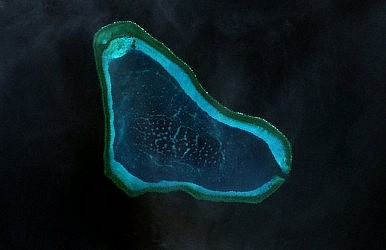Publications
The 2017 Australian Foreign Policy White Paper: A Critique
- Details
- Written by: Charmaine Misalucha-Willoughby
In 2017, Australia released its Foreign Policy White Paper, which offers a comprehensive framework to uphold Australia’s security and prosperity. It reiterates the country’s commitment to continue engaging its partners and as such, is hinged on an outward-looking perspective and a preference for a rules-based region. This overarching thrust is concretized in five objectives: to promote an open, inclusive, and prosperous Indo-Pacific, to create business opportunities and stand against protectionism, to ensure the safety of Australians, to promote and protect international rules, and to step up support for the Pacific countries.
Experts are quick to identify the implications of the White Paper on bilateral and regional relations. A task like this usually calls for a temporal scope that begins with the now and towards the future, and whose spatial horizon is centered on Australia and outwards. I will upend this logic. Instead of looking forward, I will look back in order to uncover what needed to be in place for Australia to construct such a vision of the present and, consequently, of the future. Similarly, instead of looking outwards, I will highlight how Australia’s view of the region is in itself a reflection of its own understanding of its place in international relations. Temporally and spatially, therefore, the White Paper embodies certain presuppositions that needed to exist and to be present in order for Australia’s comprehensive framework to make sense and ultimately, to guide the country’s actions. So in view of this, I argue that the implications of Australia’s 2017 Foreign Policy White Paper can only be determined if we are able to tease out the foundations on which it stands. In this regard, I offer three underlying conditions that form the backdrop of the White Paper and that color Australia’s onward and outward path.
Quiet but active: Philippine independent foreign policy unpacked
- Details
- Written by: Lucio Blanco Pitlo III*
During the briefing given by the National Task Force on the West Philippine Sea (NTF-WPS) to members of Congress last May 30, 2018, senior government officials led by National Security Adviser Hermogenes Esperon, Secretary of Foreign Affairs Allan Peter Cayetano and Secretary of National Defense Delfin Lorenzana shed more light on the evolving Philippine foreign policy. The hearing revealed how inadequate the country’s diplomatic resources are in terms of dealing with China (i.e. no dedicated China desk, understaffed Asia-Pacific desk), as well as the challenges and opportunities posed by China’s rise for the Philippines. The need to develop a think-tank to focus on the myriad WPS issues was also raised to provide government with research-based policy recommendations. I focus my analysis on what I consider as the three main takeaways from the two-and-a-half-hour public hearing, namely: 1) accomplishments made by government in WPS since assuming office in 2016; 2) preference for a quiet approach in asserting Philippine position and; 3) appreciation of the broader geopolitical context.
The Philippines and the South China Sea: Washington Think Tank Again Shows Its Bias
- Details
- Written by: Mark J. Valencia
The Asian Maritime Transparency Initiative (AMTI) at Washington’s venerable Center for Strategic and International Studies has once again revealed its bellicose pro-US bias in its analysis. AMTI Director Gregory Poling and Research Associate Conor Cronin have posted an article in War on the Rocks lamenting the slow implementation of the US-Philippines Enhanced Defense Co-operation Agreement (EDCA).
Poling and Cronin argue that “if implementation of the agreement continues at this rate, the national interests of both the Philippines and the United States will suffer.” In particular, “the Philippines will likely lose its maritime rights in the South China Sea … “, and “the United States will be seen as a paper tiger unable to protect its allies or defend freedom of the seas.” This is a gross exaggeration of the situation and its likely outcome. More important it demonstrates a lack of appreciation for the fundamental factors at work. Unfortunately this biased ‘expert’ opinion was ‘reported’ more or less word for word by The Inquirer. The main addition was to paraphrase Philippines analyst Richard Heydarian’s critique that “Duterte should have threatened China by bringing back US forces to the Philippines.” Some of the same nationalists who are clamoring for the Philippines to take action against China would probably be leery of this proposal.
Trying to Solve the Philippines’ South China Sea Conundrum
- Details
- Written by: Mark J. Valencia
On January 22, 2013, the administration of then-President Benigno Aquino III of the Philippines instituted arbitral proceedings against China under the dispute settlement provisions of the UN Convention on the Law of the Sea (UNCLOS). The arbitration concerned the role of historic rights and the source of entitlements in the South China Sea, the status of certain maritime features there, and the lawfulness of certain related actions by China that the Philippines alleged to be in violation of UNCLOS.
According to the July 12, 2016 arbitration decision, China’s historic claim to the area and its resources is not consonant with UNCLOS and is thus legally invalid. This means that the resources within some of the Philippines’ claimed zones — like the fisheries outside the territorial sea around Scarborough Shoal and any oil or gas under the Reed Bank — are Manila’s alone.

